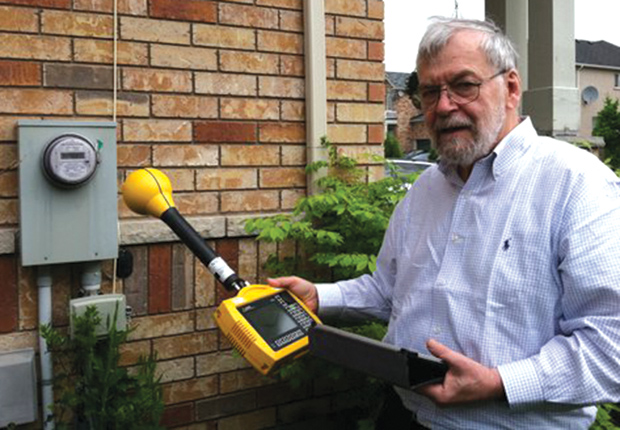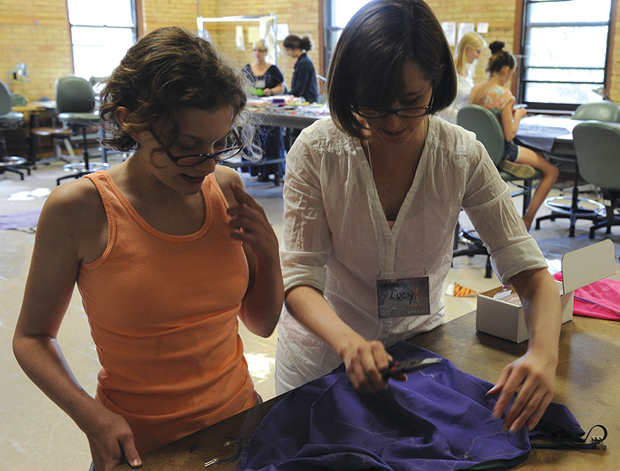Sometime over the last few years, wearable electronics have become the norm. Whether it’s a cell phone attached to a holster at the hip, a smart watch on the wrist, or sensors on and sometimes woven into clothing, these technologies are part of everyday life. Along with this trend, many of the devices are also now collecting and transmitting health information. That is certainly convenient, but the question with any kind of health care device, including wearable medical technology, has always been and continues to be: is it safe?
With that in mind, experts are taking a hard look at new advances in medical-related wearable devices and textiles to help ensure that while attempting to do good, the technology isn’t doing any harm, as some believe.
A Watchful Eye
A primary regulatory organization in the United States overseeing wearable medical technology is the U.S. Food and Drug Administration (FDA), which evaluates how well these devices and associated software applications do their jobs.
The FDA issued its guidelines, Mobile Medical Applications Guidance for Industry and FDA Staff [1], in early 2015 to clarify its focus on wearable technologies with important medical implications. The document spells out the FDA’s emphasis on technologies that
- present “a greater risk to patients if they don’t work as intended.” An app on a smartphone that monitors blood pressure for an individual who has a heart condition would fall under this description, whereas a device that a patient uses to record when he or she wants to light up a cigarette in a smoking cessation program would not.
- impact “the functionality or performance of traditional medical devices,” which would include new technologies that are designed to take the place of older medical technologies.

An electrocardiograph (ECG or EKG) is an example of the second focus, says Bakul Patel (Figure 1, right), the associate director for digital health in the FDA’s Center for Devices and Radiological Health. Early ECG machines were bulky instruments, but over time, they have been downsized to fit on a rollable cart and, more recently, onto hand-held devices. Today, smartphone-connected mobile apps are taking on the task of performing ECGs. Regardless of their format, all of these tools must perform similarly when it comes to capturing physiological data and performing the ECG-type functions, he says. “We’re looking at the functionality of the product as opposed to the platform of the technology or the size of the product. The FDA steps in and has an opinion when it doesn’t work as it’s intended.”
The FDA’s accentuation of functionality will remain constant into the future, Patel says. “We want technology to evolve, but, at the same time, we want to be sure that we have very informed guiding principles so that people have a clear view of what we consider a medical device and when patient safety and public health are important.” Accordingly, the FDA is continuing to hone its guidelines and add additional examples to reflect innovative technologies.

The U.S. Federal Communications Commission (FCC) also has some regulatory jurisdiction over wearable technologies [2]– [4], but, so far, its guidelines remain a bit behind the times, remarks Kenneth R. Foster (Figure 2), a professor of bioengineering at the University of Pennsylvania. The FCC regulations were set up decades ago, when portable devices transmitted several watts of power, and it was necessary to keep them away from the body to ensure that FCC safety limits were maintained. He notes that the wearable devices today, however, operate at far lower power levels, but the regulations have not been updated. “This has led to strange situations, such as the instructions that came with my Pebble smart watch that say I should keep my watch 2.5 cm from my body.” He speculates that a misunderstanding of FCC regulations may have led to the warning and notes that the warning has been removed from the instructions for the Pebble 2 watch (see “Is it Really Necessary to Keep My Pebble Smart Watch 2.5 cm from My Body?”).
[accordion title=”Is it Really Necessary to Keep My Pebble Smart Watch 2.5 cm from My Body?”]
By Kenneth R. Foster
In brief, the answer is no. The instruction manual for the original Pebble says, “The antenna(s) used for this transmitter must be installed to provide a separation distance of at least 2.5 cm from all persons.” Similar warnings can be found in instruction manuals for cell phones, laptop computers, and other devices with wireless capability. Activists have cited such statements as evidence that the U.S. government recognizes health hazards of the RF energy transmitted by the devices.
However, the warnings are more a result of arcane FCC rules than concern about an actual health risk. When applied to devices used near the body, the FCC limits the specific absorption rate (SAR) in the body, which is the amount of RF power deposited in a specified volume of tissue. Given the diversity of wireless devices, ensuring compliance with these limits has become a confusing and complicated matter.
The FCC requires that cell phones be tested with the device held close to the head. For devices worn against the body, the FCC requires testing with a 1.5–2.5-cm separation distance from the body, simulating the position of the device in a holster. That makes sense for some devices, such as walkie-talkies, but not for a smart watch on a user’s wrist. In fact, the FCC never required SAR testing for the Pebble watch, and it would probably not for other wearable devices if their power output were sufficiently low that they are unlikely to exceed SAR limits. Pebble may simply have misunderstood FCC rules; its warning was never required by the FCC. The warning has been removed from the instruction manual for its latest product, the Pebble 2.

The FCC limits on SAR have been in place since 1996. These limits are generally similar to limits in major exposure guidelines and are designed to protect against excessive heating of tissue. In an abundance of caution, the FCC requires that the limits be applied to the peak power output of devices, assuming that they will be radiating energy constantly when in use. That made sense for old-style communications devices that operated a high duty cycle (a large fraction of time spent transmitting). However, heating is a function of SAR averaged over time. Modern wireless devices radiate energy for only a tiny fraction of time, and the FCC’s application of its SAR limits to a wireless device radiating at peak output power is ridiculously overly conservative.
The FCC is presently grappling with ways to update its rules, but the wheels of federal bureaucracy roll slowly.
[/accordion]
What Are the Concerns?
If heat is not a problem and the FDA is overseeing functionality, what are the concerns with wearables?

“There’s a lot of interesting discussion about many of the body-sensing applications and whether they are entertainment, sports, or clinical devices. It’s becoming a bigger issue, especially as people get more access to their own health data, because sports/ entertainment devices are not necessarily evaluated rigorously,” says Lucy Dunne (Figures 3 and 4), director of the Wearable Technology Lab at the University of Minnesota. She describes the laboratory as developing innovative smart textiles that are soft, flexible, loose-fitting, and “aesthetically normal” as compared to everyday clothing.
Scientists and engineers understand where variations arise between traditional devices and wearable technologies, Dunne says, because they know “how messy it is to accurately sense something in the wearable environment.” Consumers on the other hand, see a nice, shiny interface on a device and assume the data it conveys is correct. She explains, “Some of these devices do fall under FDA approval, so they are clinically validated, but the problem in the marketplace is that it’s really hard for the general public to know which is which. And while some of the consumer devices do actually publish their accuracy data, not all of them do.”
The drawback to sports/entertainment devices arises when consumers use the data that devices collect for medical purposes. For instance, people who need to lose weight for health reasons may look to their devices for accurate estimations of the number of calories they are expending and the number of steps they are walking so that they can manage their diet and exercise. “The technology is so new that we just sort of take data at face value without being too concerned about how they were validated or whether they’re correct,” Dunne says. “As the power of these devices increases, I think it will become more important to know whether you can trust what a device or interface is telling you.”
Foster counts accuracy concerns as one of the three major issues facing wearable devices. The second on his list is that devices can be distracting, particularly when individuals are doing something that demands their full attention. “I have a smart watch, and every time I get an e-mail, including junk e-mails, my wrist vibrates. I just can’t resist looking at the thing,” he says. A similar display that continually updates health data would be no different. “I think this is equally as dangerous as texting while driving. It may be just a momentary distraction, but it’s a serious potential problem,” he says. “Nobody’s really explored the ergonomics of these wearable devices. I see an awful lot of hype in the literature about all of the wonderful things that these technologies are going to do to protect health, but it remains to be seen exactly how useful they are going to be and what the problems are going to be as they get introduced.”

A third issue Foster sees is the integration of all of these newly collected data into the health care system. He feels it is such an important consideration that he brings up the topic during one of his graduate-level courses. “We talk about apps that detect atrial fibrillation. First of all, the question is: how accurate are these things, given that it’s hard to make high-quality measurements with an app? And then we talk about integration.” Last semester, Foster and his class heard from a medical doctor who said he’s terrified that he’ll have hundreds of anxious patients constantly sending him data from their apps. He describes the collective potential drain on medical professionals, device-related distractions, and accuracy misunderstandings by users as “serious potential issues that have safety implications and medical-usefulness implications, and these are really big problems.”
More work is definitely needed on integration, agrees Patel. “Some of this miniaturization that you can wear everyday on your fabrics or on yourself has great potential, and we are very excited about that because it’s now going to give us insights into and more information about the health care process.” Concurrently, however, people need to start thinking about the importance and relevance of those data. He explains, “It’s one thing to have an EKG done in a doctor’s office, but it’s another thing to have your EKG being taken all the time. When you have all this information, what can you do with that information, and what is necessary to do with it?”
Patel calls for research into the process and utility of incorporating wearable-collected data into the health care stream. That includes the interoperability of medical devices. “This kind of research is going to be very important not just from an FDA safety perspective but also from a health care perspective because (these new technologies) have the potential to bring the whole ecosystem of health care to a better place and change the paradigm of how we look at the human body.”
What About Electromagnetic Fields?
Exposure to electromagnetic (EM) radiation has been in and out of the news for decades, as concerns—justified or not—about microwave ovens, then cell phones, and now wearable devices have been aired.
When it comes to wearable devices, most scientists, engineers, and health care agencies take the stance that they emit such low levels of EM radiation (typically two orders of magnitude less than a cell phone) that they pose no health risks at all. Some, however, still harbor a cautionary view.
“Compared to the medical accuracy issues and the driver safety issues, why worry about a hypothetical risk from some tiny exposures?” Foster asks. “My smart watch has a low-power Bluetooth transmitter…It’s inconceivable to me that these tiny, 2-milliwatt Bluetooth transmitters are going to cause any exposure problems, particularly when they transmit a small fraction of the time. And besides, everyone in the world is now using cell phones, which may transmit at levels 100 times higher, so the issue of radio-frequency (RF) exposure from relatively much weaker devices is moot.”
The literature backs up this view, he avows [5]. “People have been looking for hazards associated with RF energies since World War II, when people were worried about RF exposure from military communications systems. Later, they were worried about radiation from cell phones. All along, major health agencies have done comprehensive reviews of the literature and written 1,000-page reviews of thousands of articles and other reviews, and they all say the same thing: they don’t see any clear sign of a problem aside from too much heating, which is already regulated by the FCC.”
It is true that heat is the only universally adopted guideline in health-related exposure regulation, but engineers and researchers should do everything they can to limit EM exposure beyond the mandated limits, says Gert Cauwenberghs, a professor of bioengineering at the University of San Diego Jacobs School of Engineering, codirector of the university’s Institute for Neural Computation, and cofounder and chair of the scientific advisory board for San Diego-based Cognionics, Inc., which is developing wearable technology.
“There are studies that have clearly shown other effects of EM fields (EMFs) on body activity,” Cauwenberghs says. “And if you think about it, this makes perfect sense because radiation doesn’t just get absorbed as heat. Absorption can also have a clear effect on transitions between energy states of molecules, such as proteins and DNA, and those transitions could have some life-impacting effects.” Such transitions can occur even at very low intensities, he asserts, so wearable technologies should be scrutinized.
EM radiation can also affect cells from an electrical perspective, Cauwenberghs says, noting that small variations in electrical fields can disrupt the firing of neurons in the brain. “Just a few millivolts of radiation-induced local field potentials are enough to change the activity of neurons,” he says, adding that EM devices producing intermodulation interference in the 4- to 13-Hz range can directly impact brain waves.
Cauwenberghs readily admits that evidence linking low-level EM radiation and health dangers is less than definitive. “There have been some studies suggesting biological effects of low EM exposure, and not all studies have been rigorously performed—as occurs in every field of study—so there is controversy. However, there are studies that have established some clear effects, and they should be taken seriously,” he remarks. He points to the Bioinitiative report [6], which was written by proponents of lowering EM exposure and includes references to some of these studies. “As engineers and scientists, we have to separate the science from the advocacy in this report,” he says, but he also notes that a number of scientists, particularly from Europe, participated in the report and asserts it has scientific merit.
To shed more light on the biological effects of low EM exposure, more research is needed, Cauwenberghs says. That includes theory-guided experiments to understand the bioelectrical mechanisms at play, especially in relation to brain waves.
Regardless of the debate about whether the radiation emitted by wearable sensors and other smart technologies could cause health problems, Cauwenberghs believes engineers and researchers should continually strive to reduce the levels of EM radiation emission and to develop the lowest-powered devices possible. “As engineers, we’re starting to really look into energy efficiency of many systems, but it is slow moving. Even so-called Bluetooth low-energy isn’t what the name implies. What we need is much more energy-efficient technology, and there is still a lot of work that can be done to really improve these wireless systems,” he says.
He describes the typical metric used to measure wireless systems as the energy required to send 1 bit of information a certain distance, and the energy to transmit is proportional to the distance squared. “The best that can be done today is in the lower to upper femtojoule range per bit transmitted over 1 m distance,” Cauwenberghs says. “If circuit designers can really go after this metric in the same way that processor circuit designers have gone after the femtojoule per multiplier accumulator unit—a measure of how much work a computer does—we can really make some progress and reduce the radiation emitted as well as the footprint of wireless radiation on the environment, which is another important consideration.”
Foster concurs that minimizing the power consumption of wearable devices is desirable, but the primary reason to do so is to prolong battery life. He comments, “The limit on radiated power depends both on how far the device has to throw a signal to be useful, and the rate at which data must be transmitted. A lot of engineering effort has already been invested in minimizing power consumption for the kinds of Bluetooth interfaces that wearable devices typically use, but there is undoubtedly room for further improvement.”
Irrespective of the reason for the drive to generate low EM and power in smart devices, he added, “There will be a push sooner or later to make wearables more efficient, and electrical engineers are able to make a real difference.”
Additional work to make technology more efficient will likely always be a goal, but, at this point, studies into health risks of low EM wearable devices simply aren’t necessary, in comparison to studies addressing health concerns about the use of mobile phones and other higher-powered equipment, counters Foster. In an article coauthored with engineer and philanthropist Lorne Trottier, Foster describes the Bioinitiative report as “an egregiously slanted review of health and biological effects of EMFs” that disregards the fact that, as Foster and Trottier wrote, “the overwhelming majority of scientists see no good evidence for health effects” at levels below international exposure guidelines, which are similar to FCC safety limits [7].
“Because of public concern about cell phone radiation, there have been many studies looking at the effects of cell phone RF signals that are in roughly the same frequency range as Bluetooth and Wi-Fi, and there’s been no clear evidence of any problem,” Foster says. Since smart devices have transmitters some 100 times less powerful than cell phones, he remarks, “Health agencies say that there are scientific issues regarding RF energy that need to be clarified, in particular the weak connection that has been reported between heavy use of cell phones and brain cancer. However, it is ludicrous to worry about possible health risks from the tiny RF exposures from wearables when you read your e-mail on your smart watch while driving.”
As wearable technologies become increasingly popular and begin to make their way into everything from watches to clothing, an increasingly higher percentage of the world’s population will have at least one device—and probably multiple devices— somewhere on their bodies. This presents enormous opportunities and challenges for engineers and other researchers to study the ways people use them, evaluate how their data is or isn’t integrated into medicine, and, ultimately, create the best and safest devices that do the most to improve health care.
References
- U. S. Food and Drug Administration. (2015, Feb. 9). Mobile medical applications guidance for industry and Food and Drug Administration staff. [Online].
- U. S. Federal Communications Commission. (1987). Radio frequency safety: FCC policy on human exposure to radio frequency electromagnetic fields. [Online].
- U. S. Federal Communications Commission. (1997). Evaluating compliance with FCC guidelines for human exposure to radio frequency electromagnetic fields. [Online].
- U. S. Federal Communications Commission. (2014). Mobile and portable devices RF exposure procedures and equipment authorization policies.
- K. R. Foster, “Biological effects of radiofrequency energy as related to health and safety,” to be published.
- C. Sage, D. O. Carpenter, eds. (2012). Bioinitiative 2012: A rationale for biologically based exposure standards for low intensity electromagnetic radiation. [Online].
- K. R. Foster and L. Trottier. (2013, Feb. 15). Picking cherries in science: The Bioinitiative report, science based medicine. [Online].



